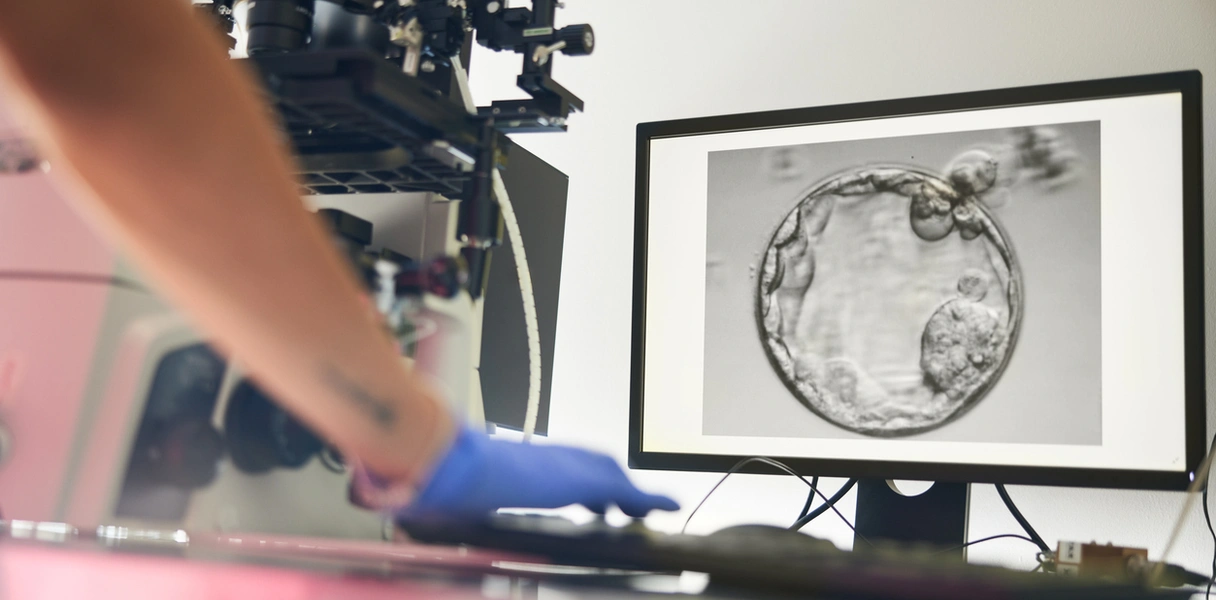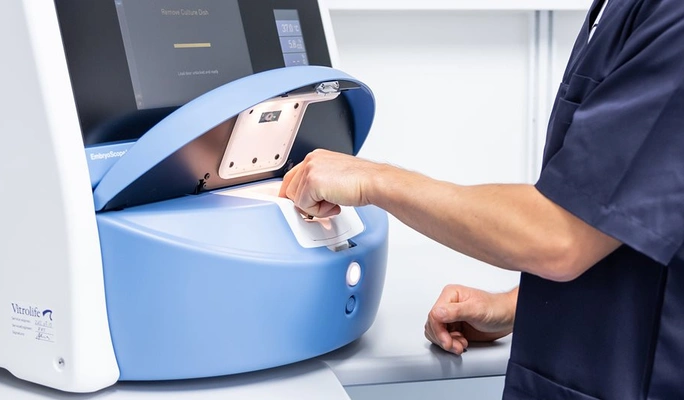Embryo culture is the process in which embryos develop under controlled conditions inside specialised incubators that mimic the natural environment of the uterus until the moment of transfer.
Embryo monitoring and cultivation
Advanced technology to select embryos with the highest potential
Continuous monitoring and proper culture of embryos make it possible to select more precisely those with the greatest potential, optimising treatment success and reducing the time to achieve a viable pregnancy.

Time-lapse (continuous embryo monitoring)

EmbryoScope+
At our clinics we use EmbryoScope+, a continuous embryo monitoring system that allows us to observe development from fertilisation to the optimal stage for transfer to the uterus.
This constant monitoring:
- Improves embryo selection
- Increases pregnancy rates
- Significantly reduces pregnancy loss
- Can shorten the overall duration of fertility treatment
EmbryoScope+ includes IDAScore software, a neural network that objectively evaluates the viability of each embryo.
IDAScore assigns a score based on algorithms trained with large volumes of data, predicting the probability of implantation. This information complements the embryologist’s assessment and allows more precise clinical decision-making.
GERI
The GERI system provides uninterrupted monitoring of embryo development, recording images and data throughout the process.
Its main benefits are:
- Objective and detailed assessment of embryo development dynamics
- Incubation in a closed environment, protecting the embryo from external conditions
- Improved evaluation of embryo morphology
- Support in key decisions, such as the use of donor gametes in later cycles
- In techniques such as in vitro maturation (IVM), it allows identification of the exact moment for intracytoplasmic injection (ICSI)
Both systems represent the forefront of embryo culture, making a decisive contribution to improving reproductive outcomes.
Frequently asked questions about embryo monitoring and culture
What is embryo culture in IVF?
How long do embryos remain in culture?
Embryos can be cultured for between 3 and 5 days after fertilisation, until they reach the blastocyst stage, which is the optimal moment for transfer to the uterus or for freezing.
What are the advantages of embryo monitoring with time-lapse?
The time-lapse system allows continuous observation of embryo development without the need to remove the embryos from the incubator. This improves culture conditions, increases implantation rates, and makes it easier to select the highest-quality embryos.
Does embryo culture affect embryo quality?
No, on the contrary. The use of next-generation incubators ensures a stable environment of temperature, oxygen, and pH, which protects and optimises embryo development.
What happens to embryos that are not transferred?
High-quality embryos that are not transferred can be cryopreserved for future attempts. There is also the option of donating them to other couples or to research, in accordance with current legislation.
Can genetic abnormalities be detected during embryo culture?
Yes, in some cases preimplantation genetic testing (PGT) can be performed on embryos during culture, allowing the transfer of only those free from chromosomal or genetic abnormalities.